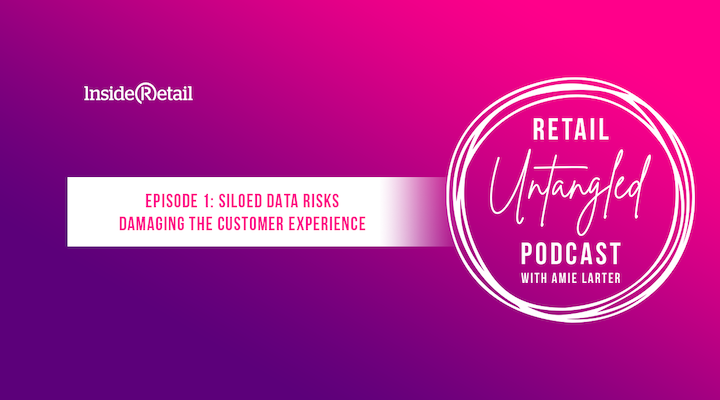In a world where customers are bombarded with information as brands try to get more exposure, data silos continue to stand in the way of good customer experiences, according to Emarsys’ APAC VP of Revenue, Kristyn Wallace.
“We collect data online and in stores, we have transaction data, and oftentimes it’s all kept in different places,” she said talking to Amie Larter on the latest episode of Retail Untangled.
“Then you have marketing or retail teams using all of these bits of data on their own without a consolidated plan around how to talk to customers, and this results in a negative customer experience.”
Simple mistakes like sending too many emails, not segmenting databases, retargeting customers post-purchase, and not making any effort to create an omnichannel experience not only cost businesses money, but also become a significant detractor to customers.
“Consumers are getting savvier to that and thinking, ‘No, I’m just not going to engage with this type of company’. Then you’ve lost an opportunity to sell something else or just create a really engaged customer.”
Start – or restart – with intention
Optimising the data a retailer has is critical to completing a seamless online-to-offline experience, says Wallace, noting that many brands still fall into the trap of collecting data without a specific purpose.
“You can have all the data in the world, but it could be completely useless and meaningless. You need to have a real intention around what you’re going to do with that data.”
The executive advises retailers to start with small amounts of data and tools they already have to create personalised segments before expanding the parameters of data collection and progressing to a deeper analysis.
“I don’t think it’s necessarily a good idea to go all out, all channels, all at once with your personalisation strategy in the beginning.
“Start small and make sure your data’s tidy and in one place so that you can use that same data to execute across all of your channels. That gives you a continuous feedback loop, and then you can start with a targeted segment or just a few personalised emails of big products or categories that someone’s interested in.”
Then, she advises, ask your customer more about who they are to help you personalise your offer for them. “That’s zero-party data, and that’s like the gold standard of what you want from a customer.”
Wallace also notes that personalisation is more important in engaging with a customer than luring them with price. She explains that customers can always go somewhere else if the experience is more personalised and the company understands them better, not because it has a lower price.
Increase retention through personalisation
Wallace says that with customers more in tune with brand experience than ever before, retailers need to listen to them in meaningful ways – on the channels they are using, at the right time, and with content that is actually engaging to them.
“Channel personalisation is something I don’t think gets thought about so much right now,” she said, adding brands also need to remember that removing channels is also considered personalisation.
As the borderline between physical and online retail spaces continues to blur, Wallace says most customers will likely do at least some product research before going into a store.
“When I walk into a store, I want an extension of my online experience. I want a personal experience that’s going to convert me.
“Overall, we need to think about that holistic approach and linking online and offline behaviour because that’s really what’s going to increase brand loyalty and engagement.”
Wallace refers to Cue, who was recently named Omnichannel Retailer of the Year at the 2023 Retailer Awards, as one of the Australian retailers doing well at engaging customers through multiple different touchpoints.
“They’ll remember what I looked at and what I liked, and they have a way to connect that in-store experience online. They can tell you when your sizes are running out or when something you like is going on sale, both online and offline. And if you say, ‘I’m not going to get these today’, the store assistant will add the item to your wishlist.”
Future of engagement prioritisation
Wallace projects that in five years, the retail industry will see a “more seamlessly connected experience” across in-store and online.
“Retail store spaces will become an extension of what’s happening in the digital world, as much as the digital world up until now has really been an extension of the store experience. We’re going to see that starting to merge and there’ll be less separation in each area and of the store being seen as a channel, as a way to engage with your customers.
“Of course, the customer must always be at the heart of that decision-making process.”






